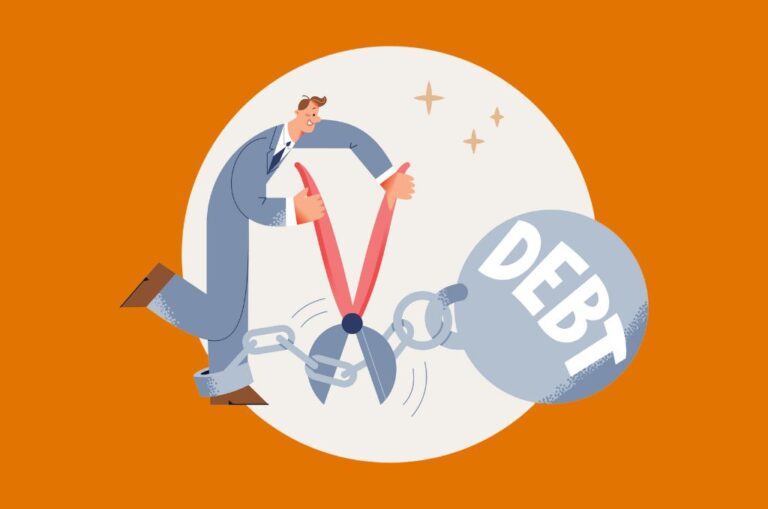Credit cards offer undeniable convenience. A tap, a swipe, and instant gratification. However, that convenience often comes at a steep price: high interest rates that can quickly transform manageable purchases into a suffocating burden. If you’re staring down $30,000 of credit card debt, you’re certainly not alone.
Millions of Americans struggle with similar circumstances, feeling trapped in a cycle of minimum payments and mounting interest. But there is hope.
Sarah (My neighbor), a hard-working professional, finds herself in a familiar situation. Her credit card statements arrive, each one a stark reminder of accumulated expenses. A weekend getaway here, a new appliance there – seemingly minor purchases that have snowballed into a $30,000 debt.
The weight of minimum payments hangs heavy, and the dream of homeownership feels increasingly distant. This scenario, unfortunately, is a reality for far too many.
Credit card debt can be a silent thief, steadily draining your financial resources. High interest rates compound the problem, turning a manageable balance into a seemingly insurmountable obstacle. This can lead to a cycle of stress, anxiety, and a feeling of helplessness.
Taking Control: A Step-By-Step Guide To Reduce Debt
Step 1: Face The Facts (and The Statements)
Knowledge is power. Before diving into battle, you need a clear understanding of your enemy. Take stock of your credit card situation by gathering all your credit card statements. Now, create a spreadsheet (or use a budgeting app) to list each card’s:
- Outstanding Balance: This is the total amount you owe on the card, including principal and accumulated interest.
- Interest Rate: This seemingly innocuous number is the hidden monster that can significantly inflate your debt over time. The higher the interest rate, the more you pay on top of the actual amount borrowed.
- Minimum Payment: This is the bare minimum amount you need to pay each month to avoid late fees, but it offers little progress towards eliminating the debt.


Having this comprehensive debt inventory will guide your debt-conquering strategy. You’ll be able to identify the high-interest cards that are draining your resources and prioritize your repayments effectively.
Step 2: Eliminate Unnecessary Expenses
Small, regular expenses can significantly impact your debt repayment progress. It’s like having a leaky faucet – the drips may seem insignificant, but they waste a lot of water (and money) in the long run. Analyze your spending habits ruthlessly. Here are some areas to explore:-
- Daily lattes: Can you brew coffee at home and bring it in a thermos?
- Unused subscriptions: Are there gym memberships or streaming services you rarely use? Canceling them can free up some cash.
- Impulse purchases: Resist the urge to buy things you don’t truly need. Consider a 24-hour rule – wait a day before making non-essential purchases to avoid buyer’s remorse.
Every dollar saved goes directly towards tackling your debt. By identifying and eliminating unnecessary expenses, you’ll free up additional resources to throw at the debt monster.
We have categorized expenses and identified areas where you can cut back. You can personalize it yourself by setting realistic spending goals (e.g., reduce daily coffee purchases by $5).
Step 3: Choose Your Repayment Method: Avalanche v/s Snowball Method – A Deep Dive
The Avalanche Method
Think of your debts as different sized burdens you’re carrying. The Avalanche method attacks the biggest burden first – the debt with the highest interest rate. This interest acts like a weight, constantly making your debt heavier. By focusing on this debt first, you:
- Save Money In The Long Run: Let’s say you have a credit card with a $5,000 balance and a whopping 25% interest rate, while another card has a $10,000 balance but a lower 15% interest rate. While the $10,000 debt seems scarier, the high-interest card is actually costing you more each month. By tackling the 25% interest rate debt first, you eliminate those expensive charges faster, saving you significant money in the long run.
Example: Avalanche In Action
Consider Sarah, drowning in $15,000 of credit card debt:
- Card A: $5,000 balance, 20% interest rate (minimum payment: $100)
- Card B: $10,000 balance, 15% interest rate (minimum payment: $200)
Following the Avalanche method, Sarah prioritizes Card A due to its higher interest rate. She throws all extra money at Card A, paying the $100 minimum payment on Card B. Here’s a simplified breakdown of the first two months:
Month 1:
- Extra payment: $300
- Payment towards Card A: $400 (minimum payment + extra)
- Interest accrued on Card A: $83.33 (assuming daily interest)
- Interest accrued on Card B: $125 (assuming daily interest)
- Total debt reduction: $316.67 (payment – interest)
Month 2:
- Extra payment: $300
- Payment towards Card A: $400 (minimum payment + extra)
- Interest accrued on Card A (reduced balance): $62.50 (assuming daily interest on reduced balance)
- Interest accrued on Card B: $125 (assuming daily interest)
- Total debt reduction: $337.50 (payment – interest)
As you can see, while the total balance decreases slowly at first (due to high initial interest), Sarah starts saving more on interest each month as she pays down the high-interest debt. This method is ideal for those who are disciplined and motivated by long-term savings.
The Snowball Method
Imagine you’re cleaning a messy room. The Avalanche method would be like tackling the biggest pile of clothes first. It might seem overwhelming! The Snowball method is like picking up the easiest things first – maybe a few toys or a stray sock.
Here’s why the Snowball method works for debt:
- Quick Wins, Big Boosts: Paying off a small debt feels great! It’s like seeing a clean corner in your messy room. This accomplishment motivates you to keep going, like a snowball rolling downhill, picking up momentum to tackle bigger debts.
- More Manageable: Focusing on a smaller debt feels less intimidating. It’s like starting with the easiest task in your messy room. You’re more likely to stick with the plan when you see progress quickly.
Example: Snowball In Action
Let’s revisit Sarah’s scenario:
- Card A: $5,000 balance, 20% interest rate (minimum payment: $100)
- Card B: $10,000 balance, 15% interest rate (minimum payment: $200)
Using the Snowball method, Sarah prioritizes Card A, the smaller debt. She throws all extra money at Card A while making the minimum payment on Card B. Here’s a simplified breakdown:
Month 1:
- Extra payment: $300
- Payment towards Card A: $400 (minimum payment + extra)
- Interest accrued on Card A: $83.33 (assuming daily interest)
- Interest accrued on Card B: $125 (assuming daily interest)
- Total debt reduction: $316.67 (payment – interest)
Month 2:
- Extra payment: $300 (assuming Card A is paid off)
- Payment towards Card B: $400 (minimum payment + extra from paid off Card A)
- Interest accrued on Card B (reduced balance): $112.50 (assuming daily interest on reduced balance)
- Total debt reduction: $387.50 (payment – interest)
While Sarah might pay slightly more interest overall with the Snowball method compared to the Avalanche method, the psychological benefit of seeing a debt disappear entirely can be a powerful motivator. This can be especially helpful for those who struggle with staying on track for long periods.
Consider Your Personality and Goals While Choosing The Method
So, which method reigns supreme? It depends on you! Here are some factors to consider when choosing your weapon:
- Personality: Are you analytical and future-focused? The Avalanche method’s long-term savings might appeal to you. Do you crave quick wins for motivation? The Snowball method might be a better fit.
- Debt Composition: If you have several small debts with similar interest rates, the Snowball method might be more motivating as you can quickly cross them off your list. However, if you have one or two high-interest rate debts, the Avalanche method can save you more money in the long run.
- Financial Discipline: The Avalanche method requires discipline to focus on the long-term benefit over the immediate gratification of seeing a debt disappear.
Remember: There’s no one-size-fits-all solution. You can even combine these methods! Perhaps you start with the Snowball method for a quick win to boost your motivation, then transition to the Avalanche method once a small debt is eliminated.
Ultimately, the best method is the one you’re most likely to stick with. Consistency is key to conquering your debt!
Additional Tips:
- Use a debt payoff calculator to compare the Avalanche and Snowball methods for your specific situation.
- Track your progress! Seeing your debt decrease over time can be a powerful motivator, regardless of the method you choose.
- Celebrate your milestones! Reward yourself for reaching repayment goals to stay on track.
Interested in putting these strategies into action?
Sign up below to receive our complimentary weekly email series packed with actionable advice, helpful resources, and exclusive subscriber benefits.
Step 4: Make More Money
Earning extra cash can supercharge your debt-fighting.
Sell those unused clothes languishing in your closet (seriously, who needs that neon green jumpsuit from 2003?).
Take on a side hustle like dog walking or freelance writing.
Action Tip: Think skills + interests = side hustle gold! Start small, have fun, and watch your debt shrink faster!
Every extra rupee you make goes straight towards demolishing that debt. Remember the saying, “Money doesn’t grow on trees”? Well, with some effort, it can definitely grow in your bank account.
Step 5: Automate The Process
What Is Automation?
Think of it as putting your debt payments on autopilot. You set it up once, and voila! Your payments get sent automatically each month, just like clockwork. This way, you never have to worry about missing a payment and those pesky late fees (which are like little gremlins stealing your hard-earned progress!).
Benefits Of Automation
- Never Miss A Payment: Automatic payments ensure you never miss a due date, keeping your credit score healthy and those late fee gremlins at bay.
- Set It and Forget It: No more scrambling to remember payment dates or manually transferring money. It’s one less thing to worry about!
- Stay On Track: Automating payments helps you stay consistent with your debt repayment plan, making it easier to reach your financial goals faster.
Bonus Tip: Consider setting up automatic payments for more than the minimum amount if your budget allows. This will help you pay off your debt even quicker!
Feeling overwhelmed by debt? Accredited Debt Relief (ADR) could be a good option to consider, especially if you’re in a tough spot.
Here’s How They Work:
ADR doesn’t offer a one-size-fits-all approach. They understand your situation is unique, which is why they provide a free consultation to review your finances and discuss personalized options. This could include:
- Debt Consolidation: Combining multiple debts into a single, lower monthly payment can simplify your finances and potentially save you money on interest.
- Debt Settlement: ADR negotiates with your creditors to potentially settle your debts for less than you owe. This can significantly reduce your overall debt and shorten your repayment time frame.
The Benefits Of Working With ADR:
- Reduced Monthly Payments: Their programs can free up much-needed cash flow, giving you some breathing room. One client, Denise, shared how ADR saved her and her husband nearly $500 a month on their debt!
- Faster Debt Payoff: ADR boasts a track record of helping clients become debt-free in as little as 24-48 months.
- Free Consultation & Personalized Approach: There’s no pressure and no cost to explore your options with a dedicated specialist.
- Success-Based Fees: ADR only gets paid if they help you achieve a debt solution, ensuring their interests align with yours.
Here’s what you can do to take the first step:
- Get A Free Consultation: It’s quick and easy. You can either call ADR or sign up online.
- See What Options You Qualify For: In minutes, you can get a better idea of how ADR can help you.
- Reduce Your Monthly Payments: Start saving money and achieve financial peace of mind.
Over 300,000 clients have already trusted ADR to help them pay off over $1 billion in debt. Why not see if they can help you too?
Oh, did you think there are only five ways to tackle debt? No way! Here are three additional methods that might not reduce your debt directly but will have a huge impact:
(1) Celebrate Every Milestone!
Getting out of debt is a marathon, not a sprint. Paid off a credit card? Treat yourself to a cheap pizza (because fancy dinners are on hold for now). Remember, even small wins deserve a victory dance! Think of it like rewarding your dog with a treat for good behavior – you deserve a reward for your financial awesomeness too!
(2) Free and Frugal Fun
Being social doesn’t have to break the bank! There’s a whole world of free entertainment waiting to be explored. Visit museums on free admission days, check out local parks and libraries for events, or have a potluck game night with friends. Board games, anyone? Plus, who needs a fancy gym membership when you have perfectly good legs for walking or running outdoors? Getting creative with free entertainment keeps your sanity intact and your wallet happy.
(3) Don’t Be Shy – Seek Support
You don’t have to fight this debt war alone. Consider talking to a trusted friend or family member about your goals. Their support and encouragement can be a huge motivator. Imagine a high-five after every debt milestone – having a cheerleader in your corner makes the journey so much easier! There are also non-profit credit counseling services available that can offer guidance and support. Don’t hesitate to seek help – a financial expert can be your secret weapon in this battle. They’ve seen it all and can help you create a personalized plan to slay those debt dragons.
Conclusion
Phew! $30,000 in credit card debt can feel overwhelming! But don’t worry!
With a plan, some smart tricks, and a commitment to ditch those late-night online shopping sprees (we’ve all been there with those late-night online temptations!), you’ll be debt-free in no time.
Remember, there’s no shame in asking for help. You’ve got this!
Find this helpful? Share it on Pinterest, LinkedIn and Facebook for your dear ones. Also, Sign up for our newsletter! You’ll get articles like this (and so much more!) delivered straight to your inbox.
Did you take our Reader Survey? If not, it only takes 1 minute and you can take our survey here.
FAQs
The speed depends on your income and repayment strategy. Paying $1,000 per month would take about 30 months, excluding interest. Methods like the debt avalanche or snowball can help speed up the process.
- Assess your financial situation.
- Create a budget.
- Choose a repayment strategy.
- Cut unnecessary expenses.
- Increase your income.
Yes, it’s significant for most people but manageable with a structured plan and disciplined financial habits.
- Debt Avalanche: Pay off the highest interest debt first.
- Debt Snowball: Pay off the smallest debt first.
- Balance Transfer: Move debt to a lower interest or 0% APR card.








